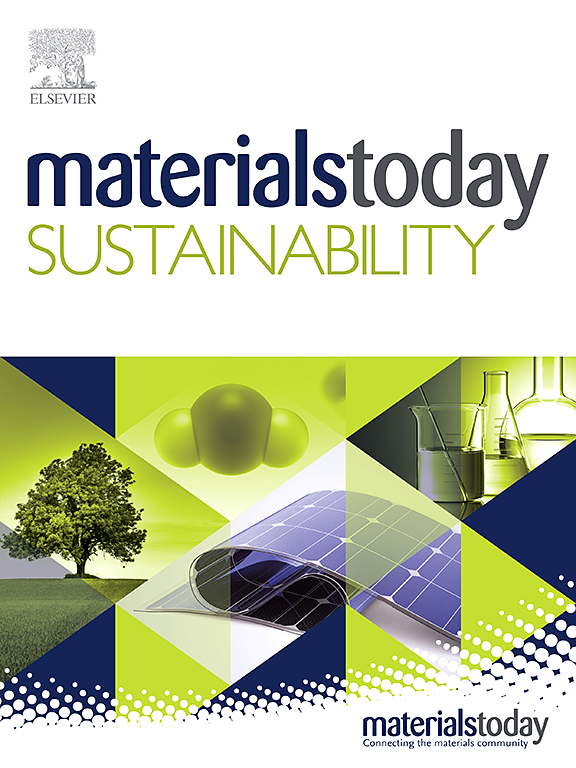BiOX(X=Cl, Br, I)-based S-scheme heterostructure photocatalysts for environmental remediation and energy conversion
IF 7.1
3区 材料科学
Q1 GREEN & SUSTAINABLE SCIENCE & TECHNOLOGY
引用次数: 0
Abstract
Over the past decade, photocatalysis has gained recognition as a powerful tool for environmental remediation and sustainable energy production. Bismuth oxyhalides (BiOX, where X = Cl, Br, I) have attracted particular interest as efficient photocatalysts due to their excellent visible-light harvesting capabilities, straightforwardsynthesis, and high photostability. S-scheme heterojunctions have been developed to further improve their performance, which enhances electron-hole separation and significantly increases photocatalytic efficiency. This review examines recent advancements in BiOX-based S-scheme heterostructures, focusing on their diverse applications in pollutant degradation, CO2 reduction, and H2 production. An evaluation of the effectiveness, benefits, and limitations of various synthesis methods has been carried out in this article in addition to various strategies to improve the photocatalytic activity of BiOX. This study also compares the suitability of the synthesized methods for removing emerging organic and inorganic pollutants, including dyes, pharmaceuticals, and other contaminants of environmental concern. The performances of various BiOX catalysts for H2 production and CO2 conversion to chemicals and fuels were discussed to point out the strengths, weaknesses, and the need for high-performance BiOX catalysts for energy conversion. Also, an analysis of the specific mechanisms driving the photocatalytic activity and strategies to address current challenges have been presented in the article. Finally, this review identifies key knowledge gaps and presents recommendations for scaling BiOX photocatalysts toward large-scale and industrial applications.

BiOX(X=Cl, Br, I)基S-scheme异质结构光催化剂的环境修复和能量转化研究
在过去的十年中,光催化已经被公认为环境修复和可持续能源生产的有力工具。氧化卤化铋(BiOX,其中X = Cl, Br, I)由于其出色的可见光捕获能力,简单的合成和高光稳定性而引起了人们对其作为高效光催化剂的特别关注。s型异质结的发展进一步提高了其性能,增强了电子-空穴分离,显著提高了光催化效率。本文综述了基于biox的S-scheme异质结构的最新进展,重点介绍了它们在污染物降解、二氧化碳还原和氢气生产方面的各种应用。本文对各种合成方法的有效性、优点和局限性进行了评价,并对提高BiOX光催化活性的各种策略进行了评价。本研究还比较了合成方法在去除新出现的有机和无机污染物(包括染料、药物和其他环境污染物)方面的适用性。讨论了各种BiOX催化剂在氢气生产和二氧化碳转化为化学品和燃料方面的性能,指出了它们的优缺点,以及对高性能BiOX催化剂在能量转化方面的需求。此外,文章还分析了驱动光催化活性的具体机制和解决当前挑战的策略。最后,本综述确定了关键的知识空白,并提出了扩大BiOX光催化剂大规模和工业应用的建议。
本文章由计算机程序翻译,如有差异,请以英文原文为准。
求助全文
约1分钟内获得全文
求助全文
来源期刊

Materials Today Sustainability
Multiple-
CiteScore
5.80
自引率
6.40%
发文量
174
审稿时长
32 days
期刊介绍:
Materials Today Sustainability is a multi-disciplinary journal covering all aspects of sustainability through materials science.
With a rapidly increasing population with growing demands, materials science has emerged as a critical discipline toward protecting of the environment and ensuring the long term survival of future generations.
 求助内容:
求助内容: 应助结果提醒方式:
应助结果提醒方式:


